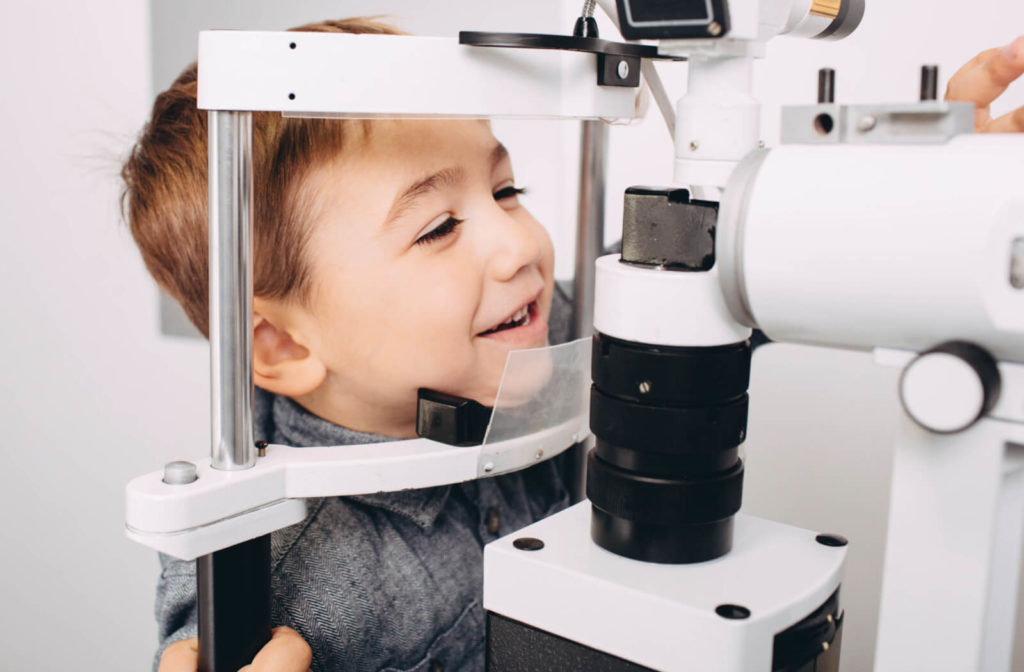Myopia, or nearsightedness, is an extremely common vision condition. It causes you to have issues seeing things that are far away while nearby things remain clear. It affects millions of people across America and tends to progress over time.
On its own, myopia doesn’t naturally go away. However, it can be corrected through eyeglasses, contact lenses, and the help of your optometrist. For people looking for a permanent solution, there are corrective surgeries—like LASIK and PRK—that can help correct the condition long-term.
What Is Myopia?
Myopia is more commonly known as nearsightedness because those with the condition can see things close-up clearly, but their distance vision is blurry.
This condition develops when the eye grows too long from front to back, causing light to focus in front of the retina instead of directly on it. It causes light rays to reach the wrong part of your eye, so your brain doesn’t receive a clear image—instead, things get blurrier the further they get from your eye.
What’s It Like to Live with Myopia?
Living with myopia can be challenging, especially without treatment. Imagine sitting in the back of a classroom and not being able to read what’s on the board or watching a football game from the bleachers and not seeing the players’ numbers. It can be frustrating to live with if you don’t have any form of vision correction.
People living with myopia often find themselves experiencing:
- Difficulty seeing distant objects clearly
- Squinting
- Headaches due to eye strain
- Frequent blinking or rubbing their eyes
- Difficulty with nighttime vision
Is Myopia Reversible?
Myopia isn’t naturally reversible. Once your eye starts to elongate—typically when you’re a young child—the overall shape can’t be reversed. This condition is permanent. However, there is a permanent solution available in the form of corrective surgery, like LASIK or PRK.
Laser-assisted in situ keratomileusis (LASIK) involves reshaping the cornea using a laser to correct vision. LASIK can be effective in treating myopia and has been performed on millions of people worldwide.
Photorefractive keratectomy (PRK) is another surgical procedure that also uses a laser to reshape the cornea. This surgery may be recommended for people with thin corneas or those who are not eligible for LASIK.
Both of these surgeries have a high success rate and can reduce or even eliminate myopia long-term. However, there’s a key piece of information to remember: not everybody is eligible for these surgeries. While laser eye surgeries have a high success rate, there’s a small chance of complications, and your unique eye situation plays an important role in whether or not you should get this surgery.
If you’re considering laser eye surgery to permanently treat your myopia, book a laser eye surgery consultation with your optometrist. They can thoroughly examine your eyes and determine if you’re an ideal candidate for this surgery.
How Is Myopia Treated?
There’s another piece of good news: while myopia isn’t reversible without corrective surgery, it is considered highly treatable. Your optometrist can recommend an appropriate form of treatment, likely through:
- Prescription glasses
- Contact lenses
- Ortho-k (specialty contacts worn overnight to reshape the cornea)
- Certain eye drops and medications
These treatment options let you continue to live a comfortable life with clear vision without worrying about the effects of myopia.
Can You Prevent Myopia?
While there are methods to slow myopia progression and reduce your risk for the condition, there is no proven way to prevent it.
Typically, myopia develops due to:
- Genetic factors and family history
- Environmental factors
- A lack of outdoor activities during developmental years
Researchers know that these factors contribute to a child’s likelihood of developing myopia, but it’s not known how to completely prevent it. While you can’t change some risk factors, like being genetically predisposed to myopia, there are still steps you can take to minimize your risk.
For children, it can be helpful to spend more time outdoors and limit screen time. Children who spend more than 2 hours a day outside are much less likely to develop myopia. Encourage your child to spend time outdoors and limit excessive screen use to lower their odds of developing this condition.
How to Manage Your Myopia
If you’re an adult and you’re already dealing with myopia, it’s essential to properly manage the condition as your optometrist recommends. It can help to:
- Wear up-to-date prescription glasses or contacts.
- Practice healthy screen habits, like using the 20-20-20 rule.
- Maintain a healthy lifestyle with a balanced diet and regular exercise—your overall health affects your eye health!
- Regularly visit your optometrist for comprehensive eye exams.

Where to Get Help for Your Vision
If you’re struggling with myopia or any other vision issues, don’t hesitate to reach out for help. Book an appointment with us at Total Vision La Mesa for a comprehensive eye exam. We’re here to support you every step of the way on your vision journey.



